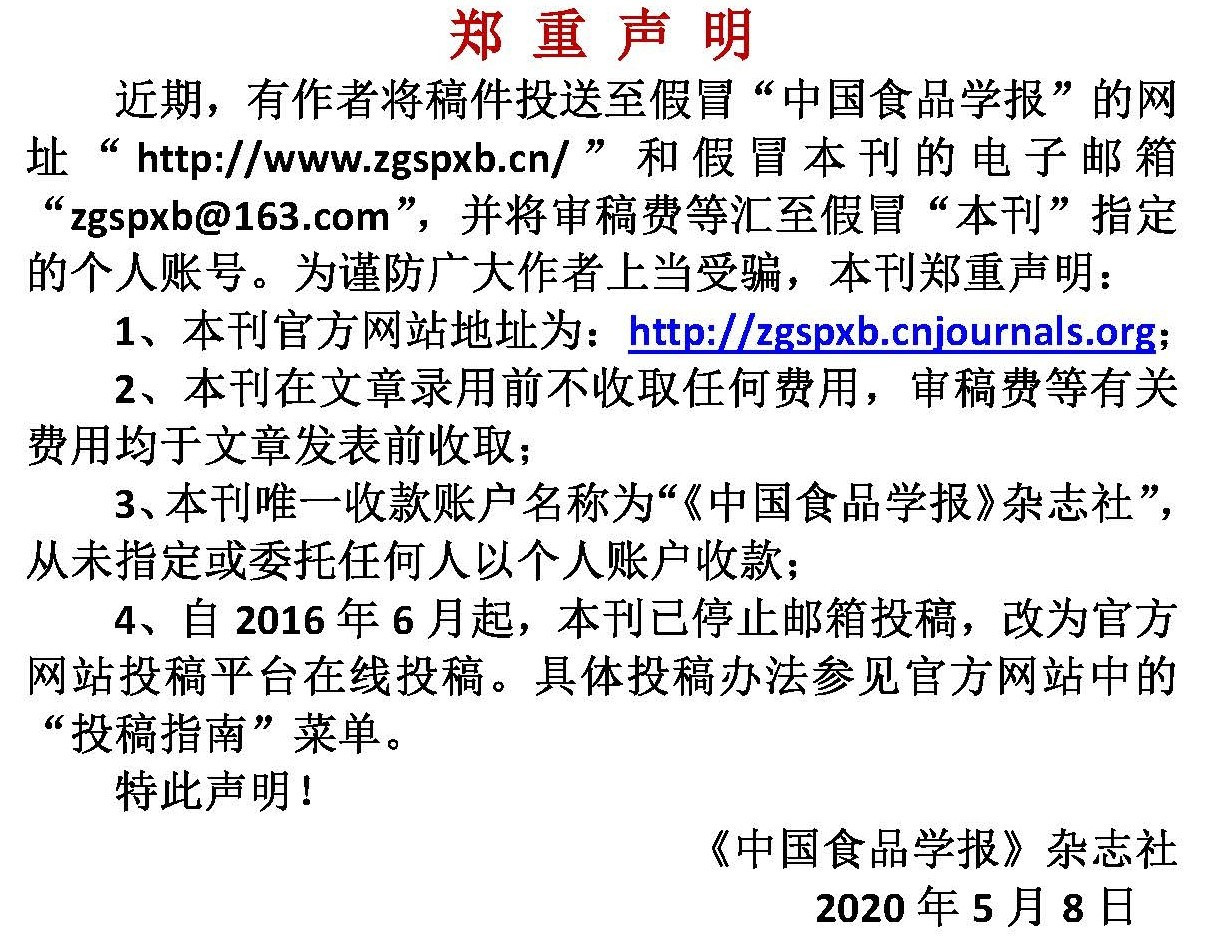(1.福建农林大学食品科学学院 福州 350002;2.国家食品安全风险评估中心 北京 100022;3.浙江大学生物系统工程与食品科学学院 杭州 310030;4.青岛农业大学食品科学与工程学院 山东青岛 266109;5.上海理工大学健康科学与工程学院 上海 200093)
张子叶(1995—),女,硕士生
福建省自然科学基金面上项目(2021J01112)
(1.College of Food Science, Fujian Agriculture and Forestry University, Fuzhou 350002 ;2.China National Center for Food Safety Risk Assessment, Beijing 100022;3.College of Biosystems Engineering and Food Science, Zhejiang University, Hangzhou 310030;4.College of Food Science and Engineering, Qingdao Agricultural University, Qingdao 266109, Shandong;5.School of Health Science and Engineering, University of Shanghai for Science and Technology, Shanghai 200093)
引用本文
张子叶,闫晓彤,王晔茹,丁甜,王军,王翔,董庆利,方婷,李长城.酱鸭中优势背景菌群对金黄色葡萄球菌生长影响的预测模拟[J].中国食品学报,2022,22(4):243-253
复制分享
文章指标
- 点击次数:
- 下载次数:
- HTML阅读次数:
历史
- 收稿日期:2021-04-23
- 最后修改日期:
- 录用日期:
- 在线发布日期: 2022-05-26
- 出版日期:
地址 :北京市海淀区阜成路北三街8号9层 邮政编码 :100048
电话 :010-65223596 65265375 电子邮箱 :chinaspxb@vip.163.com
技术支持:北京勤云科技发展有限公司
